By Scott Bennett
We regularly review new pigments and binders for potential inclusion into our already vast line of products for artists. Sometimes it is obvious that we need to fill a color space or gap between existing colors. The goal is to make smoother transitions between colors and ultimately, give the artist more color choices. After researching and testing a number of pigments, making test batches of paint and conducting further testing for stability issues, a new paint color can be the result. Other times, there are requests for specific colors, textures, and working properties of both paints and mediums, and our research brings an assortment of possibilities to the table. And finally, serendipity comes into play with a particular material suggesting other avenues to explore.
These new experimental products are a series of colors, mediums and pastes that have come from one of the above avenues of exploration and development. As is the case with all new paints and mediums, experimentation will yield unique results and possibilities that opens doors for artists.
COLORS
Iridescent Holographic Silver –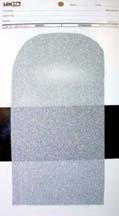
This unique iridescent paint possesses a combination of
certain qualities of both our existing interference colors and iridescent
metallic colors. In full strength, the cool and warm particles appear evenly dispersed, and account for the “Holographic” 3D sense of space. A slight angle-dependent color flip is noticeable and the surface has a fine sandpaper-like feel. When the paint is mixed with a gel medium [Heavy Gel (Gloss) in my test] in a ratio where the particles are widely dispersed in the gel, the flip from blue to gold-like colors is much more noticeable and quite beautiful, and the gritty surface becomes glossy and smooth. In certain light and angle situations all the colors of the spectrum are represented in the particle reflections.
Biotite Flake (XL) – 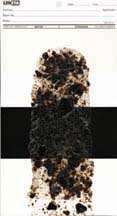
Biotite is the primary dark mineral present in granite and is typically black or brown with a flaky texture. The particles vary from about ¾” long down to microscopic in size. When applied, the distribution of the particles is unpredictable. This product is sure to pique interest in those of us looking for something to shake us out of our usual habits of working.
Vermiculite1 (Coarse) – 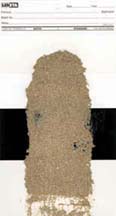
This color resembles GOLDEN Coarse Pumice Gel in texture, but with a pyrite-like (fool’s gold) effect that is the result of all the tiny reflective facets in the particles. It is dull bronze to medium brown in color, with lighter particles evenly dispersed throughout. This expanded form is porous and takes stains and washes well.
Raw Vermiculite (XL) – 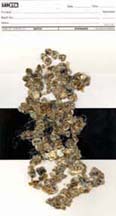
Chunky pieces of this iridescent, bronze colored, mica-like material dispersed in acrylic can have a similar bunching together of particles that one sees in the Biotite Flake (XL), but these solids are thicker (composed of more layers), more iridescent, and more regularly sized.The platelets are mostly ¼” – ½” in length and irregularly angular in shape. Because of the large particles, the resulting film becomes bas relief-like, and can function as a drawing or as a compositional element.
Fluid Ultramarine Blue (New) – 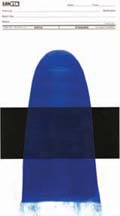
This is a more translucent, cleaner, and stronger tinting color as compared to our existing Ultramarine Blue. This does not necessarily mean it is a better pigment, since color is both relative and specific in its particular use. We felt that it was significantly different from what has been our standard Ultramarine Blue to warrant a look.
NEW YELLOWS
While we have known about the pigments used in these new yellows for some time, we didn’t see, at first, that they served a purpose in filling needed color spaces, and for color mixing attributes. After requests from a number of artists to make paint from these pigments, we made some test batches and reviewed the color swatches and drawdowns. We all felt positive about the increased lightfastness, exterior durability, and subtle filling in of color spaces that these colors offered within our existing line up of yellows.
Fluid Bismuth Vanadate Yellow PY 184 – 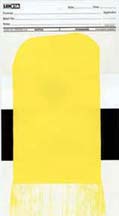
This inorganic pigment has the opacity and lightfastness of a cadmium, without the typical UV/moisture sensitivity that limits cadmiums in outdoor use. It compares to our existing Hansa Yellow Light and Cadmium Yellow Light, but is brighter, cleaner and more opaque than the Hansa and more translucent, cooler and cleaner than the Cadmium. It fills a color space in the cool end of the yellows.
The following two Benzimidazalone Yellows are extremely lightfast. PY 151 is quite a bit more opaque than its cousin PY 175. Both are organic pigments.
Fluid Benzimidazalone Yellow PY 151 – 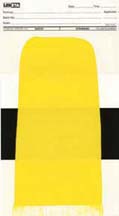
This color is similar to Hansa Yellow Opaque in the masstone, but a little less red and not quite as opaque. Much cleaner and brighter when tinted. In the masstone the Hansa Yellow Opaque and this yellow appear very similar, but when tinted with equal amounts of titanium white, the differences are obvious. Hansa Yellow Opaque appears more red and the Benzimidazalone Yellow appears cleaner, brighter and cooler.
Fluid Benzimidazalone Yellow PY 175 – 
This color is the most translucent of the three and by a subtle margin, produces the cleanest tint of the group. In color temperature, it resides between the other two new yellows.
MEDIUMS
Talc Medium – 
This is a very translucent medium, which imparts a soft satin sheen in the dry film. Talc Medium has a delicate surface and can be burnished and marked very easily. One possibility with this product is to use it as a ground for pastel and drawing. In addition, it takes stains and washes well, leaving a very crisp edge.
Satin Pearl Medium – 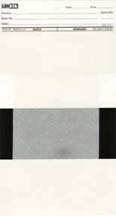
The size of the pigment in this product is comparable to Iridescent Holographic Silver, but the dry film is much more translucent, primarily cool white light is reflected, and there is a unique soft feel to the dried film. At the same time, it possesses a nice tooth for pastel work. It has a delicate surface and can be burnished and marked easily. The velvety dry film will take washes and stains easily, with a bit of edge bleeding.
PASTES
Opaque Fiber Paste II – 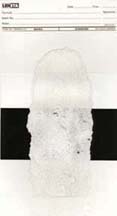
When this product is applied with a palette knife and has dried, it looks like rough handmade paper and takes washes and stains very well, keeping clean, sharp edges. To the touch, it has a much harder feel than paper, but is more flexible and whiter than our previous version. This product can be used to make paper-like grounds on canvas or board: the challenge is in the application. It tends to bunch up or clump when spread out over a surface. Skimming with a wet palette knife will help to create a smoother surface and reduce the clumping effect, but for many artists, an uneven surface and less predictable working properties may be fine. Like watercolor paper, a dry stained area can be scratched into to reveal the original white of the material.
Molding Paste (Coarse) and Molding Paste (Extra Coarse) – 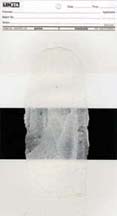
These two new molding pastes were originally called “Calcium Carbonate Pastes,” reflecting the mineral used as the pigment/filler. Both have a similar translucency and flexibility. Generally, they can be used as molding pastes are used, but each has its own special qualities. The Extra Coarse version has a distinct, rough surface in the dry film, appearing somewhat like a white Coarse Pumice Gel. There are noticeable facets that reflect light in places, which give the surface a crystalline-like appearance. Paint washes will show the coarse nature of the surface in the way that the paint will tend to settle and concentrate in the many low areas of the rough surface.
The Coarse variety looks similar to Light Molding Paste but is more dense and harder. It can be spread out easily to create thin, very translucent, warm, white surfaces that take fluids and drawing media well. It dries to a matte, somewhat rough film that can be scraped and burnished easily. For those artists who want to dig, carve or scratch into the surfaces of their work, both of these products will find good use. If you cut and scrape into the dry films and then stain into it, the marks will soak up the paint and appear much darker than the surrounding area, creating intaglio print-like marks.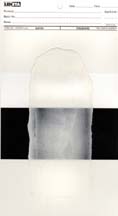
PHOSPHORESCENT COLORS
Phosphorescent Blue – 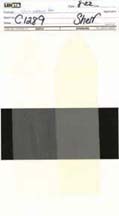

In daylight, Phosphorescent Blue appears to be a much more translucent version of our original Phosphorescent Green, but as you take it into the dark, it begins to glow violet and then in complete darkness, it glows an intense blue. It is a very unique product.
Phosphorescent Orange –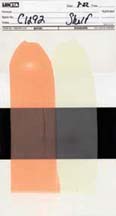
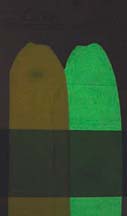
In daylight, this appears as a pale orange, and in the dark, it has a similar yellow green glow as in our standard phosphorescent paint.
If you are interested in purchasing one or more of the experimental Custom Lab products described above, please call GOLDEN Customer Service at 607-847-6154. For questions regarding any GOLDEN product contact our Technical Support Team at 800-959-6543.
Disclaimer
The information on pages 5-6 is based on research and testing done by Golden Artist Colors, Inc., and is provided as a basis for understanding the potential uses of the products mentioned. Due to the numerous variables in methods, materials and conditions of producing art, Golden Artist Colors, Inc. cannot be sure the product will be right for you. Therefore, we urge product users to test each application to ensure all individual project requirements are met. While we believe the above information is accurate, WE MAKE NO EXPRESS OR IMPLIED WARRANTIES OF MERCHANTABILITY OR FITNESS FOR A PARTICULAR PURPOSE, and we shall in no event be liable for any damages (indirect, consequential, or otherwise) that may occur as a result of a product application.
1 Vermiculite is the mineralogical name given to hydrated laminar magnesium-aluminum-iron silicate, which resembles mica in appearance. Flakes of raw vermiculite contain interlayer water in their structure and when they are heated rapidly above a specific temperature, the water flashes into steam, and the flakes expand, or exfoliate into accordion-like particles. The resulting lightweight material, the most common in commercial use, is chemically inert, fire resistant, and odorless. There is a color change during expansion that is dependent upon the composition of the vermiculite and furnace temperature.
About Scott Bennett
View all posts by Scott Bennett -->Subscribe
Subscribe to the newsletter today!
No related Post
